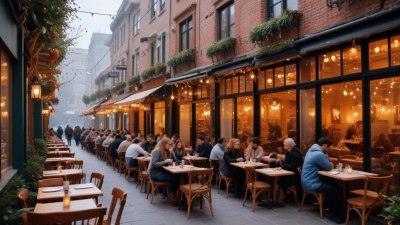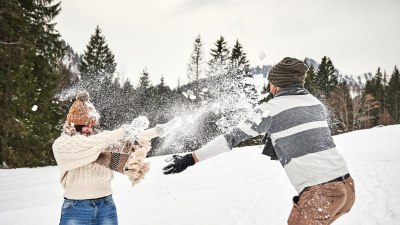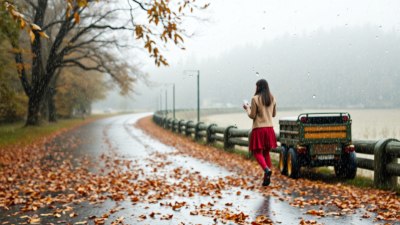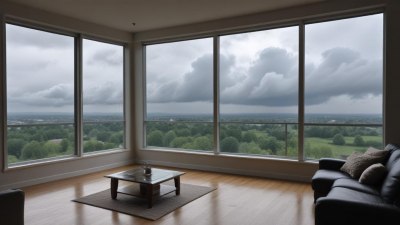Why Every Neighborhood Feels 3 Degrees Different From Your Own
Explore how cultural, social, and environmental factors make every neighborhood feel unique.
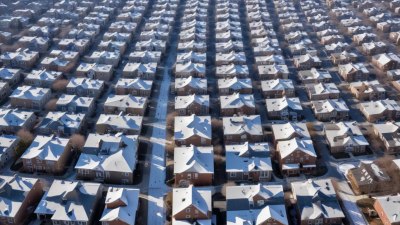
This image was created with the assistance of Freepik
Have you ever noticed that stepping just a few blocks away from your neighborhood can feel like entering a different world? This phenomenon, often referred to as the '3 Degrees of Neighborhood Separation,' touches on various elements that make each locality unique. From social dynamics to cultural influences, the differences we observe can be striking. In this article, we will delve into the reasons why every neighborhood feels at least three degrees different from your own.
Cultural Factors at Play
Culture plays a significant role in defining the essence of any neighborhood. Each area carries its cultural identity, shaped by its history, demographics, and community practices. For instance, moving from a predominantly urban area with a rich artistic scene to a suburban locale might yield a noticeable shift in lifestyle aesthetics. Urban neighborhoods often embrace modern art galleries, street performances, and eclectic restaurants. Meanwhile, suburbs may focus more on family-oriented events, local parks, or community theaters. These cultural differences contribute to the unique vibe that you experience while traversing different neighborhoods.
Socioeconomic Influences
Socioeconomics is another critical factor that can illustrate the '3 Degrees of Difference' concept. Wealth disparities can create distinct lifestyle contrasts between neighborhoods. More affluent neighborhoods might feature manicured lawns, high-end shops, and premium services, while areas grappling with lower socioeconomic conditions might showcase challenges that affect public amenities, education, and social services. These contrasts are not just physical; they influence community interactions and opportunities available to residents, which can contribute to differing atmospheres and perceptions of each neighborhood.
Architectural Styles
The architectural landscape of a neighborhood can also evoke different feelings. For instance, a neighborhood filled with historic Victorian homes can foster a sense of nostalgia and traditional values, whereas a modern urban complex might elicit feelings of innovation and forward-thinking. Architectural diversity can impact social interactions too; people often form communities around shared aesthetics or historical appreciation. When you enter a neighborhood that contrasts with your own architecture, it’s like stepping into a different narrative, emphasizing how architecture can influence sentiments and identities within those spaces.
Social Interactions and Community Dynamics
The social fabric of a neighborhood greatly shapes resident experiences. Communities where residents actively engage with each other differ widely from those where social interactions are minimal. In more tightly-knit communities, you might find faces familiar from block parties, casual conversations, or shared support during local events. Conversely, in neighborhoods where social distancing is the norm, residents may feel like mere visitors, instigating a sense of isolation. These differences in social integration can create varying emotional responses; a vibrant community can feel lively and welcoming, while one that lacks accessibility might feel estranged and intimidating.
Environmental Elements
Environmental aspects like parks, green spaces, weather patterns, and surrounding landscapes also alter how neighborhoods feel. Neighborhoods with ample green spaces and trees often feel more relaxed and inviting, which can enhance the overall quality of life. Alternatively, areas devoid of nature might feel harsher, suggesting decay or neglect. Weather can have variable effects; neighborhoods that bask in sunshine may carry a joyful, energetic ambiance, while those often shrouded in rain or cold may evoke a moodier vibe. Through these environmental lenses, we start to see why even subtle geographical shifts can lead us to perceive vastly different neighborhood experiences.
Transportation Accessibility
The way we move through neighborhoods also contributes to our experiences within them. Areas with accessible public transport, bike lanes, and walkable streets tend to feel more connected and inviting, while those that rely heavily on cars may feel disconnected or isolated. The ability to traverse a neighborhood easily enables deeper engagements with its culture, businesses, and social structures. Hence, if you find yourself in a well-connected area, you’re likely to have positive experiences compared to urban spaces with limited transport options.
The Role of Local Businesses
Local businesses also serve as cultural hubs and play a large role in creating a neighborhood's identity. A small café, a vintage bookstore, or a unique craft brewery can become synonymous with a neighborhood, drawing people in and fostering a sense of community. When you visit a neighborhood with a thriving business scene compared to one with largely chain stores, the vibrancy and character of the area can feel strikingly different. Unique local businesses tend to reflect and amplify the community’s diversity, thus changing how we perceive the neighborhood.
Education and Community Resources
The availability of educational institutions and community resources can also influence how neighborhoods feel. Areas filled with highly regarded schools can lead to thriving families, and the architecture and social structure may exude a youthful, spirited environment. Conversely, areas struggling with inadequate educational resources may not foster the same community spirits, leading to demographic imbalances and different neighborhood dynamics. A thriving community center, library, or school will foster feelings of belonging, whereas a lack of these can lead to disengagement and isolation.
Cultural Festivals and Events
Neighborhoods often celebrate their uniqueness through festivals or local events, further layering differences between communities. Participating in a local festival can feel like stepping into a vibrant cultural experience that envelops you with enthusiasm and belonging. Whether it’s a street fair, a cultural parade, or a farmers' market, these events highlight community pride and foster deeper connections among residents. On the flip side, neighborhoods without such celebrations may feel bland or disconnected from broader cultural narratives, showing just how deeply engagement shapes perceptions.
The Influence of Technology and Connectivity
In today's digital age, the influence of technology and connectivity cannot be overlooked. Neighborhoods with high internet accessibility and tech-driven facilities often buzz with ideas and innovation. This connectivity can cultivate modernistic entrepreneurial spirits, whereas areas without access might lag, creating a feeling of typecast isolation. Social media platforms have also changed the dynamics of neighborhood interactions; residents may engage in community-driven activities virtually, although this does not always translate to physical interactions.
The Psychology of Place
Finally, the psychology of place cannot be underestimated. How we perceive and feel about our neighborhoods can be deeply personal and influenced by past experiences. Factors like memory, familiarity, and individual experiences can color our impressions; a person may adore their childhood neighborhood while feeling alienated in a new one. Nostalgia can play a powerful role in shaping how we perceive a place and its significance in our lives. Unraveling these emotions reveals a more profound narrative about how we attach ourselves to our environments.
Ultimately, the concept of '3 Degrees of Neighborhood Separation' reveals the complex layers of experiences shaping how distinct neighborhoods feel from our own. From cultural and socioeconomic influences to environmental factors and local interactions, every neighborhood narrates a unique story waiting to be explored. Embracing these differences allows us to appreciate the rich tapestry of human lifestyles and interactions. By understanding and engaging with the diversity around us, we not only open our minds but also enrich our human experience as a whole. In this ever-evolving urban landscape, each neighborhood stands as a testament to the variety of human life and the profound depth behind what makes a place feel like home.
